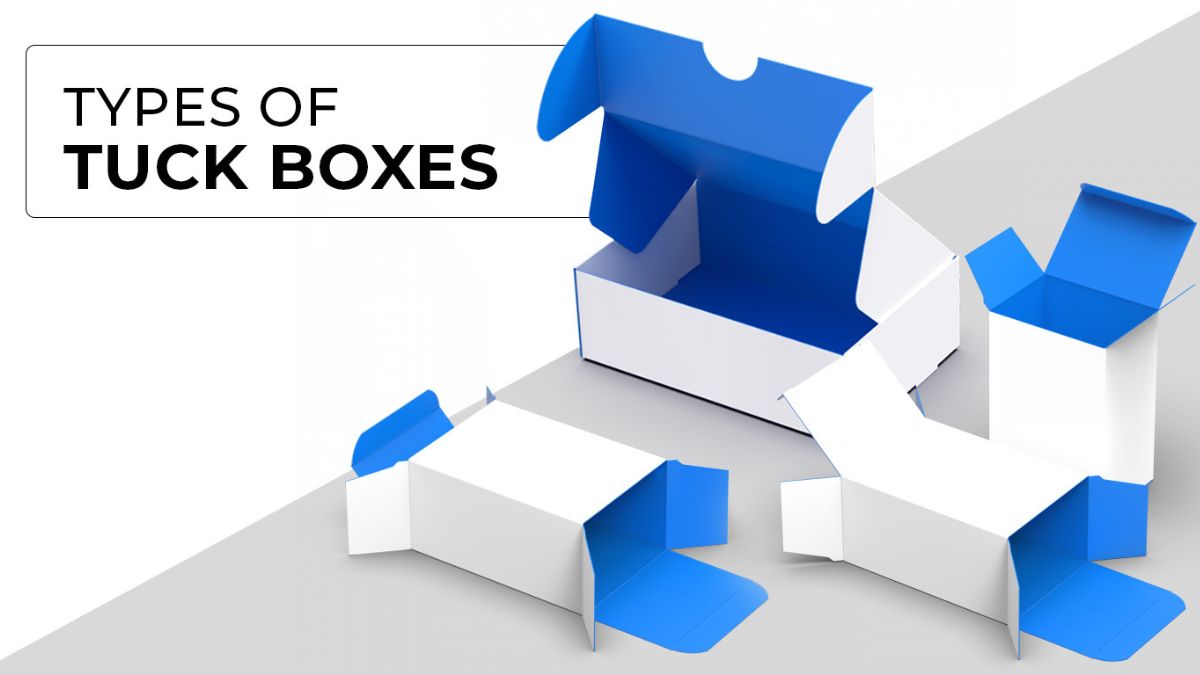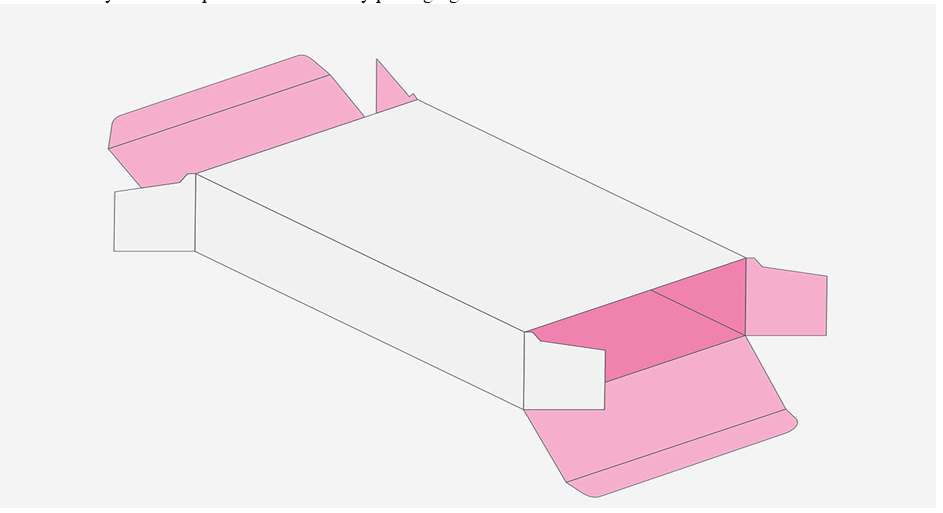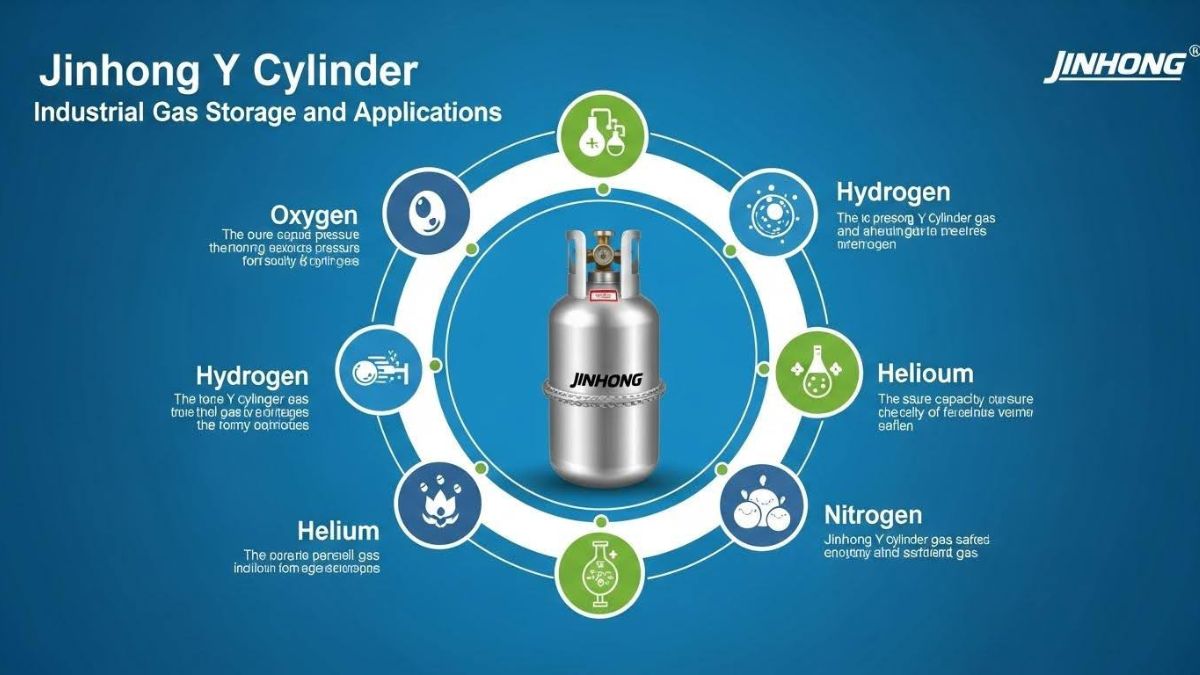TOPIC
Here’s Your Complete Guide About Tuck Boxes

With time, the packaging industry has grown a lot, with various design options and packaging styles to help brands create a difference. One of the most innovative packaging styles is custom tuck boxes. These boxes have a high-end appeal and pack the products in a way to entice the buyers.
In today’s time, customers are concerned about the style and functionality of the packaging. For them, first impressions matter because they estimate the value of the product from its outside appearance. Hence, brands cannot turn a blind eye to this aspect and need catchy packaging boxes to make a statement.

Tuck boxes are primarily used for small gift items, food storage, retail product packaging, and more. This blog post aims to share the details about these boxes, their types, and benefits. Keep reading to learn about this packaging style.
Tuck Boxes –An Introduction
A tuck box is made with a folding carton and is popularly used in retail and e-commerce businesses. It is designed to provide protection and aesthetic appeal to the products. Here is a list of some other features of these boxes that make them an ideal choice for retail packaging. Let us discuss them one by one.
Features of Tuck Boxes
1. Easy-To-Close Mechanism
One of the most significant features of tuck boxes is their closure mechanism. Their tuck and flaps are easily folded into a box, keeping the product safe and providing an easy opening for the customers. In short, these custom boxes are buyer-friendly
2. Space Savers
Another interesting feature of these boxes is their space efficiency. Brands use these boxes to utilize maximum storage space. These packaging boxes are built in a way to provide optimal space to pack items and keep them in place during organization. Hence, brands can pack a variety of items in one box easily. They can also add inserts to keep every item in its place individually.
3. Eco-Friendly
The best thing about custom tuck boxes is their eco-friendly material. These boxes are made of cardboard, Kraft, and paperboard that are highly nature-friendly. As customers today have become more concerned about the well-being of nature, so are the brands. Businesses now choose eco-friendly packaging boxes to build a positive image of their brand in the eyes of their clients.
These features make the custom tuck boxes the first choice of businesses. In addition to these appealing features, there are various styles of tuck boxes that enhance the impression of the brand. Let us now discuss various styles of these boxes to have a better understanding.
Styles of Tuck Boxes
To meet the particular requirements of the brands, various packaging companies are offering custom tuck boxes in many eye-catching styles. Some of these are as follows:
1. Tuck End Boxes
A tuck-end box has flaps on both sides, top, and bottom. This box is tightly sealed and ensures the safety of the product from all damages. There are two types of tuck-end boxes; reverse and straight.
Reverse Tuck End Boxes: Reverse tuck end boxes come with a top and bottom flap that folds into the shape of a box in an opposite direction. Hence, making it easy for the customer to open and assemble again. Mostly, brands use this box style to pack small and lightweight items like cosmetics, gifts, or candies.
Straight Tuck End Boxes: Like reverse tuck boxes, straight tuck end boxes also have a top and bottom flap, but, as the name suggests, the flaps tuck into a box shape from the same side. They provide security and an easy-to-open unboxing experience. Like reverse tuck-style boxes, these boxes are also easy to assemble. These boxes are also used to pack small items like candies and accessories.
2. Snap Lock Bottom Box
These boxes come with a bottom flap. You can easily snap the bottom flap into place and close the box. Such styles of boxes are generally known as 1-2-3 bottom boxes because it only takes three steps to fold and assemble them. Snap-lock bottom boxes are the perfect choice for packing heavy items.
3. Tuck In Flap Box
Like a tuck-end box, a tuck-in box comes with large flaps. These flaps ensure that small items remain secure inside the packaging. These boxes give an extra layer of protection to your products.
4. Die-cut Tuck Boxes
Die-cut is a unique and appealing packaging box style. Die-cut tuck boxes allow your customers to see what’s inside the box and make decisions easily. Such kinds of boxes catch the attention of buyers readily.
Benefits of Tuck Box Packaging
Most brands pick custom tuck boxes to pack their products and enhance their packaging appeal. These boxes have immense benefits for the brands. Hence, making them stand as an ideal choice in the market. This section aims to discuss the top benefits of using such a packaging style.
1. Highly Customizable
If you want to bring delight to your clients, then go fully customized with tuck packaging. Brands can thus style these boxes with vibrant color themes and catchy prints to induce buying action from the customers. The outer appearance of the packaging boxes catches the eye of buyers, which results in sales. Moreover, brands can embellish the boxes with various finishes and add-ons to further enhance the appeal of packaging.
2. Elevate Brand’s Image
Tuck boxes are highly flexible, allowing the brands to speak for their value and mission. These help brands build strong identities and bring larger opportunities to market their products and promote their business. Hence, brands can add their logos, names, and other key details to match the interests of their audience. These minute features will make your products stand out on retail shelves.
3. High-end Protection
The biggest benefit of tuck boxes is their durability. These boxes provide great security to the products, protecting them from moisture, dust, and other external damages. As these boxes are highly customizable, it is easy to choose any sturdy packaging material to make them. So, the cardboard tuck box is the brand’s top choice because it is lightweight, eco-friendly, and durable.
Some of the brands also use Kraft and paperboard tuck boxes to pack their lightweight products. These materials provide ample storage options and allow products to be carried with ease during display and transit.
4. Pocket-Friendly
Brands prefer to use tuck boxes due to their ease of affording. As these boxes are made with eco-friendly materials, they are cheap, lightweight, and cost less during shipping. Hence, this packaging solution is an economical one and allows brands to save a big chunk of their budget on packaging without risking the quality.
Wrap Up
Tuck boxes are the best choice for all industries that are looking for functionality and cost-effectiveness in one place. They come in various styles and designs to pack your products securely. Their sturdy material makes sure that your items reach your customers in pristine condition and also stand out on the shelves.
So, if you are also looking for such a packaging solution, contact Packaging Mania today. We deal in a variety of custom packaging boxes, from custom tuck boxes to custom book-style boxes, to enhance product presentation and boost brand visibility.
TOPIC
Exploring the Jinhong Y Cylinder: Industrial Gas Storage and Applications

In industrial and laboratory environments, the need for reliable gas storage solutions is crucial. Among the many formats available, the Jinhong Y cylinder stands out as a high-capacity, high-pressure gas container designed for efficient storage and transport of specialty gases. With an emphasis on purity, performance, and safety, Y cylinders are trusted by industries ranging from semiconductors and laboratories to petrochemical plants and aerospace operations.
This article takes a deep dive into the design, specifications, applications, and advantages of the Jinhong Y cylinder, while also shedding light on the broader offerings of Jinhong, a global player in the specialty gas and cylinder market.
What Is a Y Cylinder?
A Y cylinder—sometimes referred to as a “ton container” or “T cylinder”—is a large, horizontal gas cylinder used to store and transport gases in bulk, especially under high pressure. These cylinders are ideal for gases that are either costly or consumed in large volumes, such as:
- Sulfur hexafluoride (SF₆)
- Silane (SiH₄)
- Ammonia (NH₃)
- Chlorine (Cl₂)
- Hydrogen chloride (HCl)
Y cylinders are constructed using high-strength steel or other reinforced materials and come equipped with pressure relief valves, gas-specific valve types, and neck threads tailored to the properties of the stored gas.
Dimensions and Specifications of Y Cylinders
Though specifications may vary slightly by manufacturer, Jinhong’s Y cylinders typically follow global standards for gas container design. Here are some standard specifications:
| Specification | Typical Value |
| Water Capacity | 49.5 – 52.5 liters |
| Working Pressure | Up to 150 bar (depending on gas) |
| Material | Seamless steel |
| Cylinder Orientation | Horizontal |
| Cylinder Weight | ~90 – 110 kg (empty) |
| Certification Standards | ISO9809, DOT, TPED, GB, etc. |
These cylinders are built to resist corrosion, handle hazardous contents, and ensure long-term durability under demanding industrial conditions.
Why Choose the Jinhong Y Cylinder?
Jinhong, a trusted name in the specialty gas industry, has a reputation for producing high-quality gas cylinders and supplying ultra-high purity gases to global markets. Their Y cylinders stand out due to the following reasons:
1. High Storage Capacity
Compared to standard industrial cylinders, Y cylinders provide significantly more gas per unit, reducing the frequency of cylinder changes and minimizing downtime.
2. Safety Compliance
Every Jinhong Y cylinder complies with international safety codes, ensuring that gases are safely stored and transported. From valve compatibility to explosion-proof construction, these cylinders are designed for handling toxic, corrosive, or flammable gases.
3. Versatility Across Industries
Whether it’s used in a semiconductor cleanroom or a chemical processing facility, the Y cylinder can handle diverse gases without compromising purity or safety.
4. Customization Options
Jinhong offers a range of customizable features for its Y cylinders, including:
- Valve type (Diaphragm, Ball, Needle)
- Gas purity levels
- Color-coded coatings
- Stamped serial numbers for traceability
Industrial Applications of Y Cylinders
Y cylinders are essential in sectors where gas consumption is high and continuous. Let’s explore their role across a few industries:
Semiconductor Industry
Gases like silane (SiH₄), ammonia (NH₃), and hydrogen chloride (HCl) are delivered in Y cylinders to semiconductor fabs. Their large volume capacity ensures consistent feedstock supply for chemical vapor deposition (CVD) and etching processes.
Chemical Manufacturing
In chemical synthesis and polymer production, bulk gases are used in continuous-flow reactors. Y cylinders reduce gas replacement frequency and ensure stable operations.
Power and Utilities
Sulfur hexafluoride (SF₆) is a common gas used for insulation in high-voltage switchgear. SF₆ is often stored in Y cylinders due to the quantity required for substations and grid systems.
Metallurgy and Welding
Some specialty gases used in high-end alloy processing and thermal spray coatings are stored in Y cylinders to maintain purity and minimize contamination risks.
Jinhong: Beyond Cylinders
Jinhong isn’t just a cylinder manufacturer—it’s a global supplier of industrial and specialty gases. From argon to acetylene, Jinhong provides gases for welding, medical, research, and semiconductor sectors.
Interested in pricing on one of Jinhong’s most popular gases? You can explore cost breakdowns for commonly used products like argon here: Jinhong
This pricing insight is helpful whether you’re sourcing gases in bulk or planning an industrial-scale project.
Maintenance and Safety Tips
Proper handling and maintenance of Y cylinders are essential to avoid hazardous situations:
- Store upright in well-ventilated areas
- Use regulators and fittings specific to the gas type
- Perform leak checks before each use
- Never attempt to refill or modify cylinders without professional certification
- Always follow SDS (Safety Data Sheet) instructions for each gas
Jinhong provides comprehensive safety documentation and training resources for all its products, including Y cylinders and the gases they carry.
Cost Considerations
While Y cylinders require a higher upfront cost compared to standard cylinders, they offer better cost-efficiency over time due to:
- Fewer cylinder changes
- Reduced shipping and handling
- Lower downtime in continuous processes
In bulk supply scenarios or semiconductor facilities, Y cylinders can lead to significant cost savings when calculated on a per-liter or per-gram gas usage basis.
Global Standards and Certification
Jinhong’s cylinders conform to key international standards, including:
- ISO 9809 for seamless steel cylinders
- DOT/TC certification for U.S. and Canadian markets
- TPED/ADR compliance for Europe
- GB standards for China
This makes them an ideal choice for companies operating in regulated industries and across global markets.
Conclusion
The Jinhong Y cylinder represents a critical innovation in industrial gas storage, offering bulk capacity, high-pressure tolerance, and unmatched safety. Whether you’re in semiconductor fabrication, chemical processing, or energy infrastructure, this cylinder format is built to support high-performance applications while ensuring operational efficiency.
Jinhong’s commitment to quality, global distribution, and innovation in specialty gases has made them a go-to supplier for businesses around the world. If you’re looking to invest in reliable, certified, and high-capacity gas storage, the Y cylinder may be exactly what your operation needs.
TOPIC
Can You File a Claim If Road Conditions Caused Your Motorcycle Crash?

Motorcycle crashes impact lives. When poor road conditions cause these accidents, you may wonder about filing a claim. Understanding your rights helps you make informed decisions. Bad roads, such as those with potholes or debris, present unique challenges for riders. These hazards can lead to devastating outcomes. You may think, “Who is responsible?” That’s a fair question. State or local governments often manage road upkeep. If they neglect maintenance, they might be accountable. But proving this requires evidence and expertise. Consulting experienced professionals is crucial. Groth Law Accident Injury Attorneys is a trusted resource in such situations. They guide you through the legal process. Gathering evidence, such as photos or witness testimonies, strengthens your case. Awareness of these steps can protect your future. You deserve justice when harmed due to someone else’s negligence. Understand your options. Knowledge empowers you to seek rightful compensation. Let’s uncover what action you can take.
Your Legal Rights and Responsibilities
When faced with a motorcycle crash caused by poor road conditions, knowing your rights is the first step toward resolution. Do you have a claim? Yes, if negligence on the part of road maintenance entities contributed to the crash. It’s critical to determine if the government is responsible for the road’s condition. Understanding regulations helps you establish a claim. For instance, Federal Highway Administration provides guidelines on road maintenance. Knowing these can help you understand where negligence occurred.
Proving Negligence in Motorcycle Crashes
To succeed in a claim, you must prove negligence. This involves showing that the responsible party knew or should have known about the hazard. Gathering evidence is essential. You need clear proof that links the road condition to your crash. Photos, reports, and witness statements play a vital role. Document everything, including the location, time, and specific conditions of the road. These details create a strong foundation for your claim.
Steps to File a Claim
Filing a claim involves several steps. First, report the accident to authorities. Accurate police reports can aid your case. Then, seek medical attention. Health records not only ensure your well-being but also serve as evidence of your injuries. Afterward, consult legal experts. They guide you through the intricate legal process. Experts can help you notify the responsible government entity of your intent to file a claim. It’s important to meet all legal deadlines, as missing them can jeopardize your case.
Understanding Liability
Determining liability in these cases can be complex. The table below outlines possible responsible parties and their typical maintenance duties:
| Responsible Party | Typical Maintenance Duties | When Liability May Apply |
| Local Governments | Maintain city streets | When city roads are neglected |
| State Governments | Maintain highways | When highways have hazards |
| Federal Agencies | Oversee federal routes | When federal routes are unsafe |
Importance of Expert Guidance
Expert guidance is invaluable. Legal professionals understand the nuances of such claims. They assess your situation and offer advice tailored to your needs. With their help, you can navigate the complexities of the legal system. This support can be a significant relief, ensuring your rights are protected.
Taking Action
Act promptly. Time matters in these cases. Evidence can disappear, and legal deadlines can pass quickly. By acting swiftly, you preserve your rights and enhance your chances of success. Stay informed and proactive throughout the process. Your diligence can make a substantial difference in the outcome.
Conclusion
Motorcycle crashes are life-altering events. When poor road conditions cause these incidents, you have the right to seek justice. Proving negligence requires careful documentation and expert assistance. By understanding your rights and taking informed steps, you can pursue rightful compensation. Remember, you are not alone. There are resources and professionals ready to guide you through this challenging time. Your well-being and future matter. Take control and act today.
TOPIC
A Kidnapping Private Detective Shares 8 of the Top Reasons Kidnappers Choose to Kidnap Others

Kidnapping is a terrifying crime that can happen to anyone. Children and adults are often targeted. It is necessary to communicate with private investigators in OKC and process servers near me who have worked on multiple kidnapping cases. Their knowledge about kidnapping cases reveals the top hidden reasons for kidnappers. These expert professionals play an important role in solving complex cases like this.
The top 8 reasons kidnappers choose to kidnap others and how process servers in OKC and private investigators in OKC help victims seek justice are explained in this blog.
1. Ransom Money
Money is seen as the most common reason behind kidnapping. Kidnappers often target those who belong to wealthy families and business backgrounds, so they can have a large amount of money from the victims’ families. Private investigators in Oklahoma City are experts in tracking them and getting in communication to work with law enforcement for victims.
2. Personal Revenge
Kidnappers often kidnap people for personal conflicts instead of money. In such cases, people take revenge on others. It can be a partner, close friend or even a colleague. A private investigator in OKC can collect evidence and uncover the truth for justice.
3. Custody Battles
Sometimes, one parent can kidnap their child because of a custody battle, and it is known as parental kidnapping. These situations can be complicated if parents take their child outside the state. In such a situation, private investigators in Oklahoma work closely with high authorities to track kidnappers and return the child safely.
4. Human Trafficking
Human trafficking has been a major issue in the U.S., including in Oklahoma. Traffickers kidnap individuals and force them into exploitation. Quick responses from a process server in Oklahoma City can make all the difference and avoid court cases.
5. Mental Illness or Delusion
Not every kidnapper has a logic behind kidnapping. Some kidnappers have mental illnesses, and they believe it is a way to earn money from people who do not belong to them. These cases are extremely difficult and cannot be solved without the help of investigators near me who can handle complex situations.
6. Jealousy or Obsession
People who are jealous and obsessed kidnap others to gain control over them. A skilled private investigator and process server in OKC works with law enforcement to protect victims and uncover the truth.
7. Coercion or Leverage
People often kidnap others to pressure them. For example, a criminal kidnaps a business owner to get assets from them. In such high-profile cases, a process server in OK delivers legal documents to deal with the kidnappers and support victims.
8. Random Opportunity or Mistake
Some kidnappings are not planned. Some happen due to mistaken identities. Process servers and private investigators in Oklahoma City can interview witnesses and help with identifying the suspect.
Conclusion
People often get upset and emotional when they face the kidnapping of their loved ones. In such a complicated situation, it is necessary to find private investigators in OKC and a process server in Oklahoma who have experience in solving complex cases. These professionals are familiar with Oklahoma laws and work efficiently to gather evidence.
If you are searching for private investigators and process servers near me, it means you have trust in them that their services are reliable and supportable for their clients who hire them. The right team can help you everywhere, whether it’s a court matter, a child custody battle or a kidnapping case.
-

 BLOG9 months ago
BLOG9 months agoATFBooru: A Hub for Animated Art and Community
-

 CONSTRUCTION7 months ago
CONSTRUCTION7 months agoBuilding a Home Gym in Your Basement (7 Key Renovation Tips)
-

 BLOG9 months ago
BLOG9 months agoFictionmania: A Deep Dive into the World of Transformative Stories
-

 GAMES8 months ago
GAMES8 months agoSnow Rider 3D: Unblocked Tips and Tricks for Gamers
-

 BLOG6 months ago
BLOG6 months agoGIFHQ: A Comprehensive Guide
-

 BUSINESS8 months ago
BUSINESS8 months agoInvestiit.com Tips: A Comprehensive Guide for Smart Investing
-

 BLOG10 months ago
BLOG10 months agoWNFLB: A Deep Dive into Its Impact on Women’s Sports Introduction to the WNFLB
-

 TECH8 months ago
TECH8 months agoMyFastBroker vs. Traditional Brokers: Which is Right for You?
